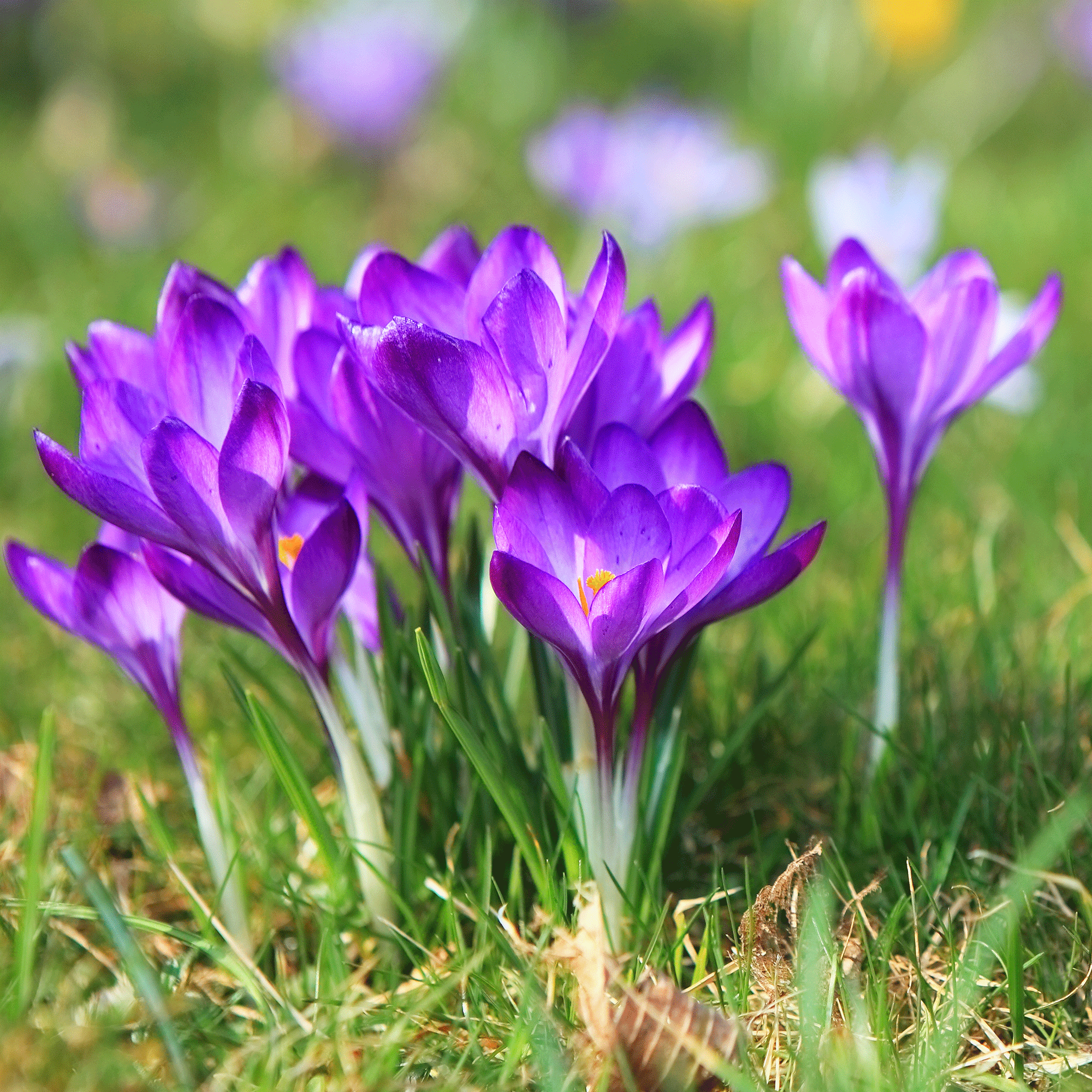How to grow crocus sativus - expert advice on how to nurture your own mini saffron farm
The autumn flowering beauties can be grown in the UK with a little care


Learning how to crow Crocus sativus is a perfect activity if you want to fill your garden with autumn colour. Delicately pretty and dainty Crocus sativus is actually a perennial herb originally found in hot, arid countries such as Greece, Morocco and Iran, flowering in the UK during the autumn months.
For thousands of years, Crocus sativus has been grown to produce precious saffron, used as a spice in cooking and as a fabric dye, and said to be worth more than gold by weight. The deep yellow saffron is extracted from the plant’s three red or orange-coloured stigmas.
It’s definitely a special addition to any garden - no other crocus can give us saffron. You can actually harvest your own saffron from your Crocus sativus by gently tweezing it out and storing it in an air-tight container, but don’t expect a huge harvest from half a dozen plants! Let a colony develop in your garden border ideas – the Crocus sativus multiplies underground, and encourages the plant to grow in generous drifts, putting on a bigger show year after year.

How to grow crocus sativus
With a little care and the right spot and soil, this colourful autumn crocus will become a welcome addition to your autumn garden ideas.
You may be wondering how to grow Crocus sativus successfully in our damp climate, but it’s certainly possible. In fact, it's essentially the same as knowing how to plant crocus bulbs. 'Delicate and colourful, crocus sativus are perfect for adding colour to autumn gardens in the prettiest shades of soft blue, lilac and purple,' says gardener Sarah Raven. 'They’re a crucial plant to grow for pollinators, particularly bumblebees, as they are packed full to the brim with pollen.' So Crocus sativus makes a great choice if you’re looking for bee garden ideas.
Growing to between 10cm and 30cm high, the Crocus sativus develops as an underground corm – more rounded than a typical bulb, covered in scaly leaf-type forms – eventually producing leaves, bracts, bracteole and a stalk bearing those gorgeous six-petalled flowers, and precious stamens of course.

If you’re unsure how to grow Crocus sativus in your own garden, test them out first by planting in container garden ideas or raised beds in full sun, is the advice of Claire Hooper, plant area manager for Hillier Garden Centres.
Sign up to our newsletter for style inspiration, real homes, project and garden advice and shopping know-how
Crocus Sativus bulbs are dormant during summer and won't flower until autumn, with blooms typically appearing in October. Sometimes they’re even known as the autumn crocus. Claire says that during the growing season, keep the soil evenly moist and avoid over-saturation – this crocus is used to sunnier climes. They tend to dislike heavy clay soils too.
To achieve the best results from your Crocus Sativus, plant during the months of August and September, says Julian Palphramand, head of plants at British Garden Centres, and they should flower a couple of months later.
What you will need to grow Crocus sativus
- Trowel - a sharp, long multi-purpose trowel for making planting holes, Wilkinson Sword Steel Hand Trowel, £11, Amazon
- Peat-free multi-purpose compost – this is to pop into the holes you make before you add each Crocus sativus corm (bulb). It will deliver nutrients, and help the bulb to ‘settle’ and produce strong roots. B&Q GoodHome Peat-free Multi-purpose Compost 50L, £6, is a good option.
- Horticultural grit – good to improve drainage for Crocus sativus. You can try Homebase horticultural grit, 5kg now £2.50.
Step-by-step
Claire shared this simple step-by-step guide on how to grow Crocus sativus in your own garden.
1. Prepare the ground
Use a garden trowel to loosen the soil and add a good peat-free compost to improve its quality. If your soil is prone to waterlogging, bring in a few handfuls of horticultural grit too.
2. Plant bulb facing upward
Plant the bulbs (corms) at a depth of about 10cm with the pointed end facing up, keeping a distance of 8cm between each of them. Cover each planted bulb carefully with the soil/compost mix and firm gently, taking care not to cause any damage.

3. Water thoroughly
After planting, water the area thoroughly to help the bulbs settle and promote initial root growth.
FAQ
Can I grow Crocus sativus in UK?
Although Crocus sativus originates from hot, dry countries, so would be a good choice in a year-round drought-tolerant garden it can easily be grown whatever the UK’s more changeable climate delivers, says Sarah. 'This means it’s a perfect plant for adding a touch of autumn colour to your garden. I’d suggest planting Crocus sativus in a spot which catches the sun in your garden.'
Is Crocus sativus hard to grow?
If you’re wondering how to grow Crocus sativus, check your soil is suitable. It’s happiest in a gritty, well-drained soil that’s poor to moderately fertile, says Sarah: 'If you have any deciduous trees in your garden, your Crocus sativus will also thrive in the humus-rich leafy soil underneath.' So if you’re planning to add best trees to even the smallest garden and want to include Crocus sativus as underplanting for autumn colour, look for good deciduous species.
Will you be planning a saffron harvest next year?

Jayne Dowle is an award-winning freelance gardening, homes and property writer who writes about everything from swimming ponds to skyscraper apartments, for publications including Sunday Times Home, Times Bricks & Mortar, Grand Designs, House Beautiful and The Spectator. Awarded the Garden Journalist of the Year accolade at the Property Press Awards in 2021, she has a degree in English Language and Literature from the University of Oxford and a lifelong love of homes, interiors and gardens.